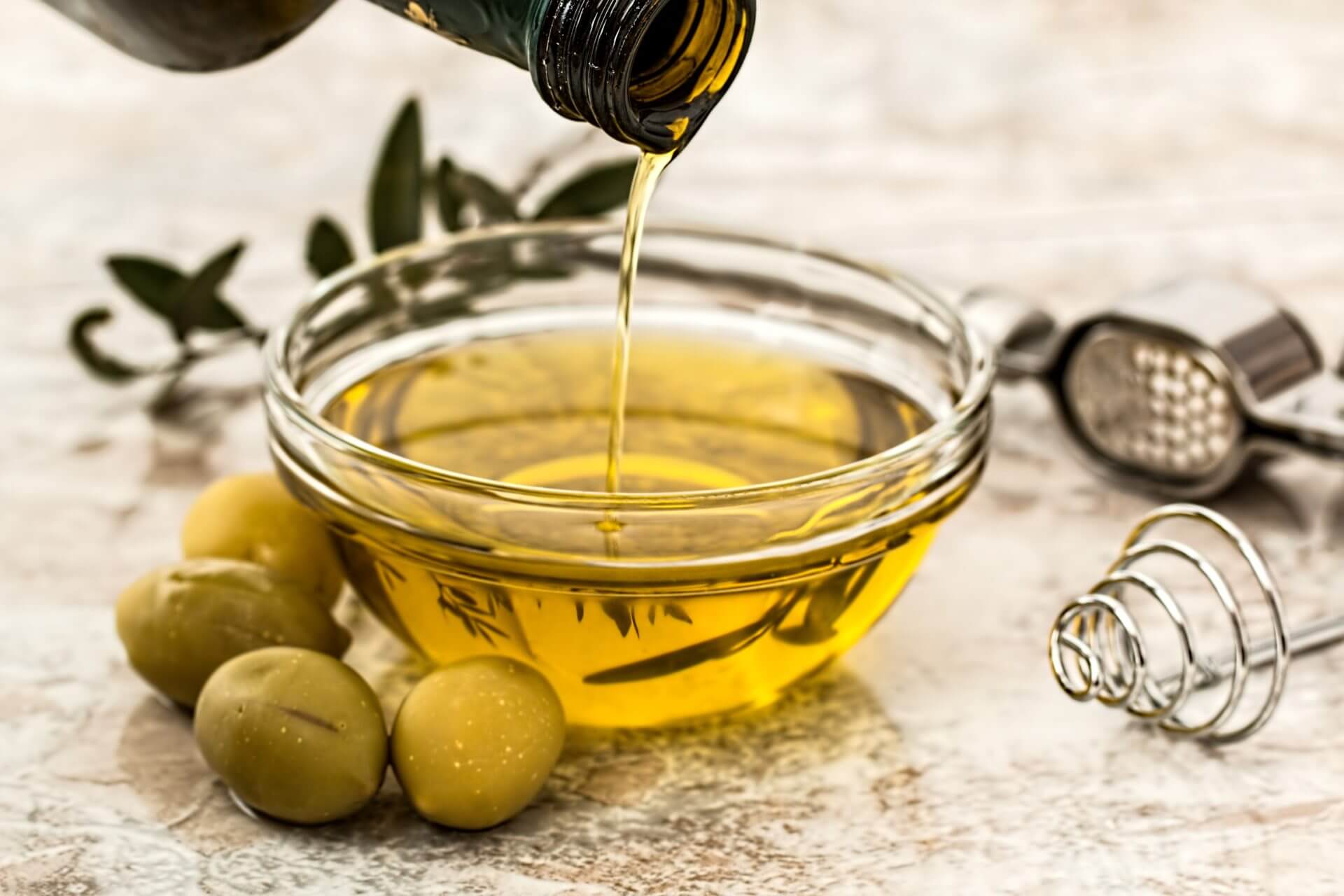If you’re over 30 years old, you likely remember the “low-fat” craze of the 90s. Fats were vilified, and consumers snapped up fat-free and low-fat products (which were chock full of sugars, processed ingredients, and chemicals, btw). In more recent years, we’ve come to learn that fats aren’t evil — in fact, they’re essential to the healthy function of your body. The important thing is to eat the right types of fat, which can be a bit confusing to figure out. We’ve got you covered with this brand new guide to fats. Read on to learn the difference between healthy fats and unhealthy fats, examples of healthy fats to use, the best cooking oils and worst cooking oils for your health, and more.
You can also listen to this guide on The WellBe Podcast.
Understanding “Healthy Fats” vs “Unhealthy Fats”
Right off the bat, it’s important to understand how vital fat is to your health. Your body needs dietary fat to absorb fat-soluble vitamins and minerals (such as vitamins A, D, E, and K), but also to build cell membranes, and allow your blood to clot. Fats are also an important and efficient form of energy, as each gram contains 9 calories as compared to the 4 calories found in each gram of carbohydrates or protein.
Dietary fat — not to be confused with the fat humans carry on their bodies — can be found in both plant-based and animal-based foods. Every fat-containing food is comprised of a mixture of different fatty acids, and which fatty acids are most predominant will shape whether they are healthy or unhealthy fats.
On the highest level, fats are divided into two categories: saturated fats and unsaturated fats. Saturated fats are generally considered to be unhealthy fats, whereas unsaturated fats are considered healthy. The difference between saturated and unsaturated fats lies in their chemical structure. All fats are made up of carbon, hydrogen, and oxygen molecules, but saturated fats are “saturated” with hydrogen atoms, meaning they have the highest number of hydrogen atoms possible and no double bonds in their chemical structure. Saturated fats are solid at room temperature (butter, for example). Unsaturated fats, on the other hand, are not fully saturated with hydrogen atoms and contain one or more double bonds. They are liquid at room temperature (olive oil, for example).
These differences in chemical structure might not mean a ton to non-scientists, but they make a big difference to your body. Because saturated fatty acid chains have no gaps, they can pack together very tightly, which can clog arteries (a major risk factor for heart attack and stroke) and raise LDL (bad) cholesterol when they enter the bloodstream. Unsaturated fats do not have this effect.
Another thing that separates healthy fats from unhealthy fats is their ratio of omega-3 to omega-6 fatty acids. Both omega-3 and omega-6 are polyunsaturated fats (aka “healthy”), but we’ve recently learned that the ratio between the two matters a lot. Today, people are consuming way more omega-6 fatty acids than in previous generations, largely because omega-6 levels are so high in many common cooking oils and because most processed and packaged foods are made with these omega-6 containing oils. At the same time, omega-3 consumption has dropped significantly, and our bodies haven’t had enough time to genetically adapt to this new balance. To give you a sense of how recently this ratio has changed in our diets, the NIH explained that “up until about 100 years ago, the omega-6/3 ratio has been around 4:1 or less. Today, the typical Western diet now provides an omega-6/3 ratio of approximately 20:1 in favor of omega-6.” This has distorted the ratio of these fatty acids in our body, which matters because omega-6s are pro-inflammatory while omega-3s are anti-inflammatory. The current ratio in a typical American diet perpetuates chronic low-grade inflammation, and given that chronic inflammation is an underlying cause of many diseases, this is a big deal for your health.
Examples of Healthy Fats and Unhealthy Fats
Now that we know what makes a fat healthy or unhealthy, let’s get into some specific examples of healthy fats and unhealthy fats. As we mentioned above, every fat is either saturated or unsaturated, with the former being considered unhealthy and the latter healthy, but it’s a bit more nuanced than that.
Examples of Unhealthy Fats
- Trans fats: The least healthy kind of fat is trans fats, which is short for trans fatty acids. Trans fats are formed by turning liquid oils into solid fats via a process called hydrogenation. These fats can increase bad cholesterol while suppressing good cholesterol, and contribute to chronic inflammation. Because they can increase disease risk even when eaten in small quantities, the WHO recommends that trans fats account for less than 1% of a person’s daily calories. There are also naturally occurring trans fats, which occur in dairy and meat. These are less of a health concern, but only because Americans eat so many more artificial trans fats, since they’re found in countless products. Artificial trans fats are found primarily in processed foods made with partially hydrogenated vegetable oils, including fried foods, baked goods, crackers, packaged snack foods, margarine, and shortening. Food manufacturers are required to list trans fats on their nutrition labels, though they can circumvent this requirement if the product contains less than 0.5 grams per serving (look at the ingredient list for hydrogenated oils to be sure).
- Saturated fats: Saturated fats are not as bad as trans fat, but should still be eaten sparingly in order to protect heart health. Consuming too much saturated fat can increase bad cholesterol, and research shows that replacing saturated fat with polyunsaturated fat reduces risk of heart disease. It’s important to note that recent research has cast doubt into whether saturated fat is actually that bad as it relates to heart disease, but the general consensus is that eating too much of it is bad. For that reason, the American Heart Association still recommends that saturated fat account for no more than 5-6% of a person’s daily calories. Saturated fats are primarily found in animal and dairy products, such as red meat, butter, cheese, ice cream, dark poultry meat and skin, certain oils like coconut and palm oil, and lard.
Examples of Healthy Fats:
- Monounsaturated: These unsaturated fats contain one double bond in their chemical structure. They are typically liquid at room temperature, but solidify if refrigerated. They’re a good source of vitamin E, an antioxidant that is often lacking in American diets. Research shows that eating a diet high in monounsaturated fat (such as the Mediterranean diet) is associated with better blood cholesterol levels and lower risk of heart disease. Examples of foods containing monounsaturated fats are olives, olive oil, avocados, nuts (hazelnuts, almonds, Brazil nuts, cashews), seeds (sesame and pumpkin), and vegetable oils like olive, avocado, and canola oil (more on that below).
- Polyunsaturated: These fats contain two or more double bonds in their chemical structure. They’re known as “essential fats,” because your body can’t make them on your own, meaning you need to get them from foods. The two types of polyunsaturated fats are omega-3 and omega-6. Just like monounsaturated fat, polyunsaturated fats can decrease your risk of heart disease by lowering levels of bad cholesterol. Polyunsaturated fats are found in fatty fish salmon, herring, sardines, trout (which contain primarily omega-3 fatty acids), walnuts (omega-3 and omega-6), flaxseed (omega-3), roasted soybeans (omega-3 and omega-6), tofu (omega-6), and vegetable oils (omega-6).
The Worst Cooking Oils vs the Best Cooking Oils
There’s a lot of confusion over which cooking oils are healthy and which are unhealthy, at least in part because some oils that sound healthy simply aren’t (wouldn’t you think something called a vegetable oil would be healthy?!). But when you consider the factors we outlined above (the balance between different types of healthy and unhealthy fats, as well as the omega 3 to 6 ratio), it becomes easier to decide what you should stock in your cupboard.
Oils tend to be high in polyunsaturated and monounsaturated fats, and are an important part of a healthy diet because they’re a key source of essential fatty acids and vitamin E. However, the makeup of different fatty acids can vary greatly from oil to oil, so it’s important to understand the breakdown before you make a choice. Generally, the best cooking oils contain more unsaturated fats, while the worst cooking oils contain more saturated fats — but unfortunately, it’s not that simple.
There are three other factors to consider when choosing healthy oils: smoke point, processing, and the ratio of omega-6 to omega-3.
The smoke point is the temperature at which an oil becomes so hot that it starts smoking. When an oil is heated past this point, the molecular structure of its fatty acids begin to degrade, producing potentially harmful free radicals (It also starts to taste bitter or burnt. Yuck.). Free radicals can cause cellular damage that may lead to the development of disease. Oils heated past their smoke point can also release a substance called acrolein, which can be dangerous to your lungs. So if you plan on using an oil to fry, sear, or sautée something over high heat, make sure you check the smoke point. Otherwise, and otherwise “healthy” oil could turn unhealthy.
Some oils are processed (or refined), while others are not. Highly refined oils tend to have a higher smoke point, which can be a good thing, but many are refined using chemical solvents, most commonly hexane. In one study of oils, 36 out of 40 samples contained hexane residue, which has been linked to muscular weakness, headache, dizziness, giddiness, and slight nausea, among other negative health effects. However, you can also find refined oil that is cold-pressed rather than treated with a chemical. Look for the term “cold-pressed” or “virgin” to know that an oil was processed without chemical aid.
Lastly, because many oils are so high in polyunsaturated fats — aka omega-3 and omega-6 fatty acids — you need to consider the ratio of the two. As we mentioned above, having a high ratio of omega-6 to omega-3 fatty acids can lead to chronic inflammation.
Now that we’ve looked at what makes an oil more or less healthy, let’s look at the worst and best cooking oils.
Worst Cooking Oils
- Refined olive oil: Also labeled as “pure” olive oil or “light” olive oil, this oil is a blend of extra virgin olive oil and processed oils. The processing makes the oil last longer and increases the smoke point, but it adds potentially harmful chemicals and removes nutrients.
- Coconut oil: Coconut oil is often held up as a “healthy” oil, but it’s actually higher in saturated fat and lower in unsaturated fat than most other oils. This high saturated fat content is why it’s solid at room temperature. However, coconut oil has a lot more health benefits than other high saturated / low unsaturated fat oils. For example, coconut oil has antimicrobial and antifungal properties due to its medium-chain triglycerides (MCT) content, so there are many health professionals who still think it’s worth using but perhaps limiting how much you use of it and using it topically more than for cooking.
- Corn oil: While corn oil contains some healthy components, like vitamin E, it has a very high ratio of omega-6 to omega-3 — 46 to 1! This makes it very inflammatory.
- Canola oil: Canola oil is high in heart-healthy monounsaturated fat, low in saturated fat, and has a high smoke point, which reduces the risk of degradation during cooking. On the flipside, it is highly processed using chemicals, and has a high omega-6 to omega-3 ratio.
- Soybean oil: Not only does soybean oil have a ratio of omega-6 to omega-3, it’s also been linked to obesity, diabetes, autism, Alzheimer’s disease, anxiety, and depression. Plus, its high levels of linoleic acid may be harmful for heart health because the acid is pro-inflammatory and can contribute to blood clots. Yikes!
- Palm oil: Palm oil has some redeeming health benefits: it’s a good source of vitamin E, and may improve brain health. However, some research ties it to impaired heart health, plus palm oil is incredibly damaging to the planet, as palm plantations require the destruction of tropical forests and put endangered species at the risk of extinction.
Not As Bad But Not Good Cooking Oils
- Peanut oil: Peanut oil has a very high smoke point, making it safe for high-heat cooking, and is rich in vitamin-E and low in saturated fats. The only sticking point here is the omega ratio, but you can counter that by eating more omega-3s. Just make sure you choose cold-pressed or virgin peanut oil.
- Safflower oil: Made from the seeds of the safflower point, this oil is naturally non-GMO along with containing healthy monounsaturated fats and vitamin E. One study showed that consuming safflower oil on a daily basis may improve inflammation, blood sugar management, and cholesterol. Still, it has a high content of omega-6s and a significantly lower content of omega-3s.
- Sunflower oil: Sunflower oil has tons of vitamin E, and high levels of oleic acid, which has been shown to increase good cholesterol and reduce inflammation. But again, as with all vegetable- and seed-derived oils, the ratio of omegas is a concern.
Best Cooking Oils
- Extra virgin olive oil (EVOO): Perhaps not surprisingly, the star of the Mediterranean diet is indeed a healthy oil. Packed with monounsaturated fats, vitamin E, oleic acid, and antioxidants, EVOO is not only heart-healthy but also linked to a lower risk of obesity, metabolic syndrome, and type-2 diabetes. The one caveat is that it has a low smoke point, so don’t use it if you’re cranking up the heat. It’s great to use on salads or something you’re cooking on low heat.
- Avocado oil: Avocado oil has a similar nutritional profile to extra virgin olive oil, with almost as much monounsaturated fat and plenty of vitamin E and oleic acid. It’s been shown to help lower risk factors for heart disease (like high cholesterol) as well as reduce joint inflammation, increase absorption of other nutrients, and protect cells against free radical damage! Plus, it has a relatively high smoke point so it’s fine to use when you’re using high heat.
- Sesame oil: High in unsaturated fats, sesame oil also contains the heart-healthy antioxidants sesamol and sesaminol, which may protect against the neurological consequences of certain diseases, including Parkinson’s. Another study found that using sesame oil daily for 90 days improved fasting blood sugar in people with type 2 diabetes.
- Flaxseed oil: Because flaxseed oil is very high in omega-3 fatty acids, it’s a great way to help out your omega-6 to omega-3 ratio if you consume vegetable oils. However, its smoke point is quite low so it’s best not to cook it — instead, use it in salad dressings, dips, or served with bread.
The WellBe Takeaway on Healthy Fats and Unhealthy Fats
Fat is an essential part of a healthy diet, and your body can’t function properly without it. However, the type of fat that you eat matters a lot, as some have positive effects on your body, while others have negative effects. It can be confusing to remember which fats to choose and which to steer clear of, so here’s what to remember:
- Fats are vital to your bodily function. They provide energy, help build cell membranes, and allow your body to digest fat-soluble vitamins.
- Fats can either be saturated or unsaturated, and the difference has to do with their chemical structure. Saturated fats are generally considered unhealthy, are solid at room temperature, and can clog your arteries and damage heart health in other ways. Unsaturated fats are generally considered healthy, are liquid at room temperature, and can actually improve heart health.
- The ratio of omega-3 fatty acids to omega-6 fatty acids is important when it comes to discerning healthy from unhealthy fats. If you consume too many omega-6 fatty acids and too few omega-3 fatty acids, it can cause chronic inflammation.
- Saturated fats are further divided into trans fats and regular saturated fats. Trans fats are the worst fats for your health, as they can contribute to high cholesterol and inflammation, among other issues. They should account for no more than 1% of your daily calories. Saturated fats are known to harm heart health, but may not be as bad as previously thought. They should account for no more than 6% of your daily calories.
- The two types of healthy unsaturated fats are polyunsaturated and monounsaturated fats, which can both protect heart health. Polyunsaturated fats are known as “essential fatty acids,” which means that your body can’t make them on their own.
- The worst cooking oils for your health are refined olive oil, coconut oil (though this one you should keep and use for other things besides cooking), palm oil, canola oil, and soybean oil. The best cooking oils for your health are extra virgin olive oil, avocado oil, sesame oil, and flaxseed oil. Sunflower oil, safflower oil, and peanut oil are a mixed bag, with their omega-6 to omega-3 ratio the main downside.
Besides the oil you buy at home for cooking, one of the best ways to keep a good ratio of omega 3 to omega 6 foods in your diet and therefore keep down inflammation in your body is to avoid food you don’t cook yourself. Canola oil, sunflower oil, safflower oil and soybean oil are among the cheapest and worst oils for you so they are used in most prepared foods (both packaged and processed foods you buy in the store and takeout and restaurant food). If you’re eating a lot of food in packages or frozen meals or food made in restaurants, you’re going to be consuming a lot of omega 6 foods and your omega 6 to omega 3 ratio will be high (which is not good!). Don’t believe us? Go in your pantry now and read a few ingredient labels. Tell us what you see in the comments below!
Listen to this guide on The WellBe Podcast.
Citations:
- Albahrani AA, Greaves RF. Fat-Soluble Vitamins: Clinical Indications and Current Challenges for Chromatographic Measurement. Clin Biochem Rev. 2016 Feb;37(1):27-47.
- Siri-Tarino PW, Chiu S, Bergeron N, Krauss RM. Saturated Fats Versus Polyunsaturated Fats Versus Carbohydrates for Cardiovascular Disease Prevention and Treatment. Annu Rev Nutr. 2015;35:517-43.
- Simopoulos AP. The importance of the ratio of omega-6/omega-3 essential fatty acids. Biomed Pharmacother. 2002 Oct;56(8):365-79.
- Dhaka V, Gulia N, Ahlawat KS, Khatkar BS. Trans fats-sources, health risks and alternative approach – A review. J Food Sci Technol. 2011 Oct;48(5):534-41.
- Mohsen Mazidi, Hong-kai Gao, Andre Pascal Kengne, “Inflammatory Markers Are Positively Associated with Serum trans-Fatty Acids in an Adult American Population”, Journal of Nutrition and Metabolism, vol. 2017, Article ID 3848201, 6 pages, 2017.









COMMENTS